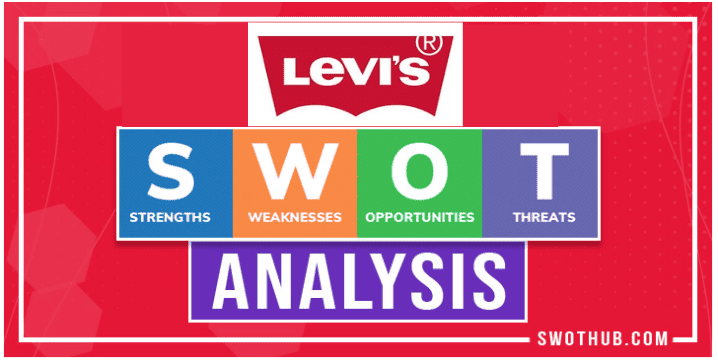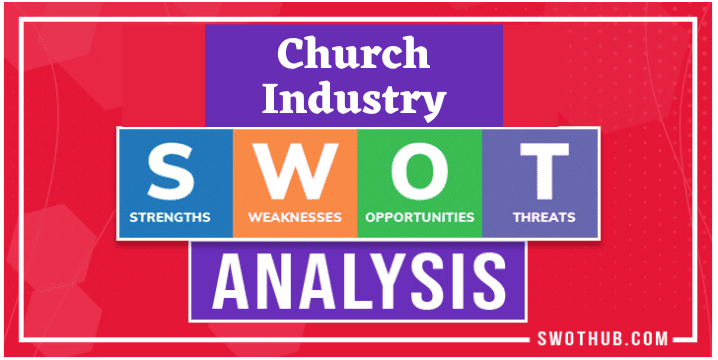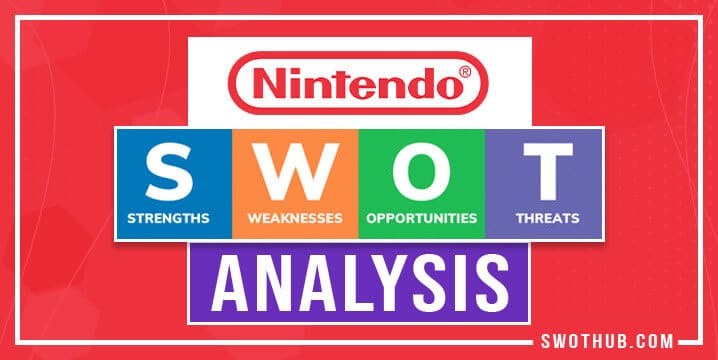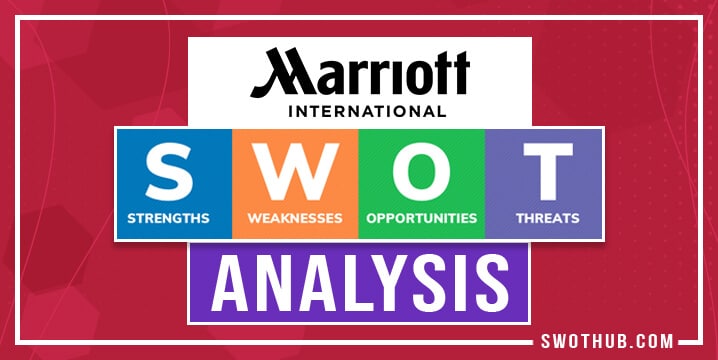American blue jeans could possibly be categorized as the most iconic fashion apparel in the retail industry. In this Levi’s SWOT analysis, we look at how this pioneering brand began as a denim work pants and evolved to be a global staple for the young to old. In a Levi’s SWOT analysis, we take a look at how competitors like Gap and H&M have taken much of the market share, but Levi’s strengths and opportunities help to continue their great stake in the retail industry.
Table of Contents
Levi’s History
Levi Strauss, a German immigrant, established Levi Strauss & Co., better known as Levi’s, in 1853. When Strauss and tailor Jacob Davis patented the technique for using metal rivets to reinforce stress points in denim work pants, the company rose to prominence with the creation of the first pair of denim jeans in 1873. With the introduction of the iconic “501” jeans in 1890, Levi’s expanded throughout the early 20th century and came to represent American workwear and youth culture.
From the 1970s to the 1990s, Levi’s expanded quickly and diversified its business, introducing new product lines like Dockers and foraying into untapped markets like sportswear. Due to heightened competition from companies like Gap and Tommy Hilfiger, the business did experience difficulties in the 1990s. In order to regain its footing, Levi’s underwent a period of restructuring that included the closure of some production facilities, the outsourcing of production, and a shift in attention toward its core offerings and innovation.
In a Levi’s SWOT analysis, by focusing on sustainability, innovation, and a strong online presence, Levi’s has managed to maintain a dominant position in the denim market today. Despite competition from well-known brands like Wrangler and Lee as well as fast-fashion retailers like H&M and Zara, the company is still a top pick among fans of denim. Levi’s enduring presence in the cutthroat world of fashion has been made possible by its iconic status and dedication to producing high-quality goods.
Levi’s SWOT Analysis At-A-Glance
| Company | Levi’s, Levi Strauss & Co. |
| Industry | Fashion, Retail |
| Founder | Levi Strauss |
| Year founded | 1853 |
| CEO | Charles V. Bergh |
| Headquarters | San Francisco, California |
| Number of employees | 15,100 (2022) |
| Revenue (FY 2022) | US $5.76 Billion (2021) |
…
What are Levi’s 4 Values?
Levi Strauss & Co. is guided by four core values that inform their decision-making and shape their corporate culture. These values are:
- Empathy: Levi’s is a firm believer in placing oneself in the shoes of another person to comprehend their viewpoints. To make sure that everyone feels valued and heard, the company stresses the significance of treating clients, partners, and employees with respect and compassion.
- Originality: In a Levi’s SWOT analysis it is important to Levi’s because it was a pioneer in the denim industry. Through constant research into novel concepts, layouts, and technologies, the company aims to stay one step ahead of the competition. This dedication to originality aids Levi’s in upholding its status as a legendary, fashion-forward company.
- Integrity: Levi’s is dedicated to operating ethically and sensibly in all aspects of business. The business has high standards for decency, equity, and responsibility. This dedication to integrity permeates every aspect of the company’s operations, including its interactions with its staff, clients, suppliers, and the local communities where it conducts business.
- Courage: Levi’s values bravery and boldness in the face of difficulties. The business promotes risk-taking, failure-learning, and the ability to make tough choices when necessary. Levi’s has been motivated by this spirit of bravery to push the limits of the fashion world and continue to be a leader in denim and apparel.
Levi’s SWOT Analysis:
A SWOT analysis is a framework used to assess a company’s competitive situation and to create strategic planning. By taking Levi’s strengths, and weaknesses of Levi’s threats of Levi’s as well as opportunities of Levi’s into account, we may better gain in-depth knowledge about Levi’s company. In this article, we’ll be taking a look at Levi’s SWOT framework to better understand its competitive position and potential for future growth. See how Levi’s competitors fare against them and learn about Levi’s strengths, weaknesses, opportunities, and Levi’s threats.
Levi’s SWOT Analysis Strengths:
The areas where a company excels above average or in a manner that distinguishes it from its rivals are its strengths. Levi’s strengths are outlined in this Levi’s SWOT analysis. In a SWOT analysis of Levi’s, some of its strengths compared to competitors include:
Brand recognition and heritage: Since its founding in 1853, Levi’s has earned a reputation as the inventor of the blue jean. Customers are drawn to the brand because of its illustrious history and iconic status, and this helps to build strong customer loyalty.
Product quality and innovation: In a Levi’s SWOT analysis, Levi’s is renowned for producing durable, high-quality denim. From the introduction of riveted jeans to the creation of new fabric technologies, the company has a history of innovation. This dedication to quality and innovation sets Levi’s apart from rival brands and appeals to customers looking for durable, dependable clothing.
Initiatives for sustainability: The fashion industry has seen significant progress from Levi’s in addressing social and environmental concerns. The company is positioned as a leader in sustainability thanks to its emphasis on water conservation, ethical sourcing, and waste reduction throughout its supply chain. This dedication not only improves the brand’s reputation but also appeals to consumers who are becoming more environmentally conscious.
Collaborations and partnerships: Levi’s has a history of working well with brands, designers, and artists. Through these collaborations, the business can stay current with fashion and create buzz, further solidifying its position in the sector.
These Levi’s strengths, along with others, help Levi’s maintain its competitive edge in the fashion sector and stay a top pick for denim lovers all over the world.
Levi’s SWOT Analysis Weaknesses:
Weaknesses of a company are those that limit its potential, make it less competitive, and prevent it from achieving its goals. In this section of the Levi’s SWOT analysis, we’ll look at Levi’s weaknesses. In a Levi’s SWOT analysis, some of their weaknesses compared to competitors include:
Pricing: In comparison to fast-fashion retailers like H&M and Zara, Levi’s products are generally thought to be more expensive. Particularly during recessions, Levi’s may find it difficult to compete with more cost-conscious customers due to this price difference.
Competition from fast fashion: H&M and Zara, two fast fashion retailers, can offer new products more quickly than Levi’s and can quickly adjust to shifting trends. Because of their flexibility, these rivals can attract trend-conscious customers looking for the newest styles at competitive prices.
Reaction to offshoring: Like many other apparel companies, Levi’s has come under fire for moving production to nations with less expensive labor. The company’s commitment to fair labor practices may be viewed negatively as a result of this offshoring.
Experience in-store: Despite Levi’s having a significant online presence, there are times when different locations offer different in-store experiences. As a result, the business might find it difficult to give customers a seamless shopping experience, which is essential for fostering brand loyalty and boosting sales.
To maintain its competitive position in the fashion industry, Levi’s must address these weaknesses. The business can continue to set itself apart from rivals and appeal to a wide range of customers by putting a strong emphasis on innovation, sustainability, and improving the overall customer experience.
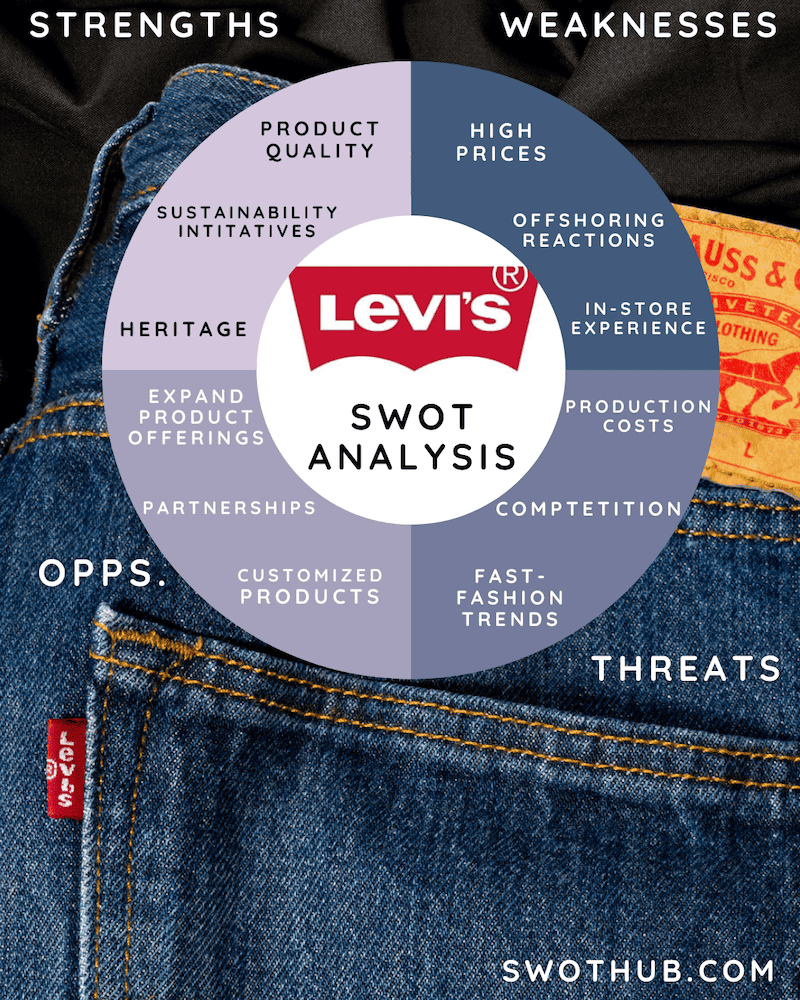
Levi’s SWOT Analysis Opportunities:
The following portion of the Levi’s SWOT analysis will examine some of Levi’s opportunities compared to competitors including:
Increasing product offerings: By expanding its product line beyond denim, Levi’s can reach new markets and become less dependent on the denim industry. This might entail diversifying into new product categories like activewear, shoes, or accessories.
Personalization and customization: In a Levi’s SWOT analysis, by offering personalized and adaptable products, Levi’s can differentiate itself from rivals and meet the preferences of different customers. The business can offer a distinctive shopping experience that increases brand loyalty by utilizing technology and customer data.
Partnerships and collaborations: Continuing to work with prominent designers, public figures, and other brands can create buzz and draw in new clients. These collaborations can support Levi’s in maintaining its position as a forward-thinking, innovative brand and in keeping up with current fashion trends.
Stressing sustainability: As consumers’ awareness of how their purchases affect the environment and society grows, Levi’s can profit even more from its sustainability initiatives. The business can stand out from rivals and win over environmentally aware customers by promoting eco-friendly practices and products.
Levi’s has taken great strides in several of these opportunities, but Levi’s needs to continue to be innovative and strive to push for more uniqueness to everyday consumers.
Levi’s Competitors:
In a SWOT analysis of Levi’s, its competitors would fall under the “threats” category. Here are some of Levi’s main competitors in the fashion industry. Many people ask:
Who are Levi’s Largest Competitors?
- Wrangler: Another well-known American denim company with roots dating back to 1947, Wrangler is renowned for its tough, premium jeans and western wear.
- Lee: Lee is another venerable American denim company that dates to 1889. Similar to Levi’s, Lee is known for its innovation in the denim industry. Its product line consists of jeans, jackets, shirts, and shorts.
- Gap: In a Levi’s SWOT analysis, Gap is an American retail and apparel company that was founded in 1969 and sells a variety of clothing, including denim. The variety of fits, styles, and affordability of Gap’s jeans have made the brand a strong competitor in the market for casual clothing.
- H&M: A Swedish fast-fashion retailer founded in 1947, H&M has become a household name with a wide selection of goods, including denim.
- Zara: a fast-fashion retailer was established in Spain in 1974, and it is renowned for its trendy designs and quick turnaround times. Customers looking for stylish and reasonably priced options can choose from a variety of denim products at Zara.
Each of these Levi’s competitors create an opportunity for Levi’s to level-up their pricing, marketing, wearability and to try and diversify product offerings above the competition.
Levi’s SWOT Analysis Threats:
Threats pose a risk to every company’s stability and profitability. This article on the Levi’s SWOT analysis will address some of the threats that are important to examine.
In a SWOT analysis of Levi’s, some of its largest threats compared to competitors include:
Intense competition: As mentioned in this Levi’s SWOT analysis, with well-known brands like Wrangler, Lee, and Diesel as well as fast-fashion retailers like H&M and Zara, the fashion industry, and the denim market, is extremely competitive. The market share and profitability of Levi’s could be under threat from these rivals.
Fashion trends: Fast-fashion retailers can quickly change with the times and provide the newest styles for less than Levi’s. It may be challenging for Levi’s to maintain its competitive edge and adapt to changing consumer preferences because of this rapid turnaround.
Rising production costs: The pressure on Levi’s profit margins can come from rising costs for labor, transportation, and raw materials. The business might have to pass these costs along to customers, which might reduce how competitively priced their products are.
Concerns about sustainability: As the environmental and social effects of the fashion industry become more widely known, there is growing pressure on Levi’s to implement sustainable practices throughout its supply chain. If these worries are not addressed, there may be bad press and a decline in consumer confidence.
Levi’s can create strategies to lessen their effects and keep a strong position in the cutthroat fashion industry by identifying and addressing these threats.
Levi’s SWOT Analysis – Conclusion and Recommendations:
Levi’s needs to focus on a number of key strategies to remain competitive in the retail fashion industry.
To stay competitive in the future, Levi’s should consider the following recommendations:
- Focus on sustainability: Continue to invest in and promote sustainable practices throughout the supply chain, emphasizing eco-friendly materials and responsible sourcing. This focus can help differentiate Levi’s from competitors and appeal to environmentally conscious consumers.
- Diversify product offerings: Expand product lines beyond denim, exploring new categories such as activewear, footwear, and accessories. This diversification can help reduce reliance on the denim market and tap into new consumer segments.
- Enhance digital presence: Boost e-commerce capabilities and spend money on social media and digital marketing campaigns to reach more people. Customer engagement can be increased and sales can be increased by improving the online shopping experience and implementing omnichannel retail strategies.
- Personalization and customization: Offer personalized and customizable products to cater to individual consumer preferences. Leveraging technology and customer data can provide a unique shopping experience, strengthening brand loyalty.
- Collaborations and partnerships: Continue to collaborate with high-profile designers, celebrities, and other brands to generate buzz and attract new customers. These partnerships can help maintain Levi’s status as an innovative and trendsetting brand.
- Improve in-store experiences: Invest in enhancing the in-store experience by implementing technology like virtual fitting rooms, improving store layouts, and providing exceptional customer service. This focus can create a seamless shopping experience and increase customer satisfaction.
- Target emerging markets: Pursue expansion opportunities in emerging markets with growing middle-class populations. These markets can provide new growth opportunities and allow Levi’s to establish a strong presence early on.
- Monitor and adapt to trends: Keep up with shifting consumer preferences and fashion trends and adjust product offerings and marketing tactics as necessary. With its flexibility, Levi’s may be able to stay relevant in the quickly changing fashion industry.
By putting these suggestions into practice, Levi’s will be able to stand out from rivals, draw in new clients, and keep its dominant position in the fashion sector.

